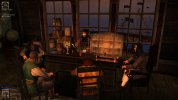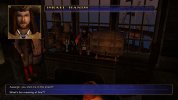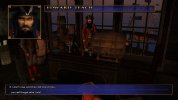Dat Scharger
Master Mariner
Ahoy!
After playing Sea of Thieves for some time and following the forums, it seems that most of those players who just kill and sink everything they see for no reason, appear to be honestly believing that that was what historical pirates truly did: murdering everyone and sinking every ship they came across. Just because.
Which I think stems from their portrayal in media like Pirates of the Carribean: You either have some handsome rogues who are so cool and actually pretty friendly that you wouldn't mind being robbed by them; or the absolute scum of the earth, whose main purpose in life seems to be causing as much pain and suffering as possible.
Of course, I don't deny that some individuals like that didn't exist, but thinking about documentations and some research, I think that those kinds of pirates were pretty rare. Most were actually interested in gaining their loot without bloodshed and were perfectly fine with leaving the enemy crew alive if they just surrendered.
So in some efforts to clear some misconceptions about them...
...what do you think about some collaboration to create a list with some short historical facts?
Like this:
-No, pirates weren't good-looking sunnyboys. Due to being on sea for days or weeks depending on their destination, they hadn't the opportunity to visit bathhouses or even washing themselves (Which is why things like soap were highly popular goods for stealing) that often. Also, scurvy was running rampant on ships without access to fruits.
-Pirates didn't sail large ships like galleons, as they were just too slow, cumbersome and had too much draught. Instead, they prefered sloops for quick hit-and-run-tactics and then escape with their plunder in shallow waters where larger navy ships couldn't follow them. The biggest ships they ever had were frigates, and they didn't last long.
(If I'm telling nonsense here or such a thread already exists, please correct me)
Those were just examples.
Well, what do you think?
After playing Sea of Thieves for some time and following the forums, it seems that most of those players who just kill and sink everything they see for no reason, appear to be honestly believing that that was what historical pirates truly did: murdering everyone and sinking every ship they came across. Just because.
Which I think stems from their portrayal in media like Pirates of the Carribean: You either have some handsome rogues who are so cool and actually pretty friendly that you wouldn't mind being robbed by them; or the absolute scum of the earth, whose main purpose in life seems to be causing as much pain and suffering as possible.
Of course, I don't deny that some individuals like that didn't exist, but thinking about documentations and some research, I think that those kinds of pirates were pretty rare. Most were actually interested in gaining their loot without bloodshed and were perfectly fine with leaving the enemy crew alive if they just surrendered.
So in some efforts to clear some misconceptions about them...
...what do you think about some collaboration to create a list with some short historical facts?
Like this:
-No, pirates weren't good-looking sunnyboys. Due to being on sea for days or weeks depending on their destination, they hadn't the opportunity to visit bathhouses or even washing themselves (Which is why things like soap were highly popular goods for stealing) that often. Also, scurvy was running rampant on ships without access to fruits.
-Pirates didn't sail large ships like galleons, as they were just too slow, cumbersome and had too much draught. Instead, they prefered sloops for quick hit-and-run-tactics and then escape with their plunder in shallow waters where larger navy ships couldn't follow them. The biggest ships they ever had were frigates, and they didn't last long.
(If I'm telling nonsense here or such a thread already exists, please correct me)
Those were just examples.
Well, what do you think?


















